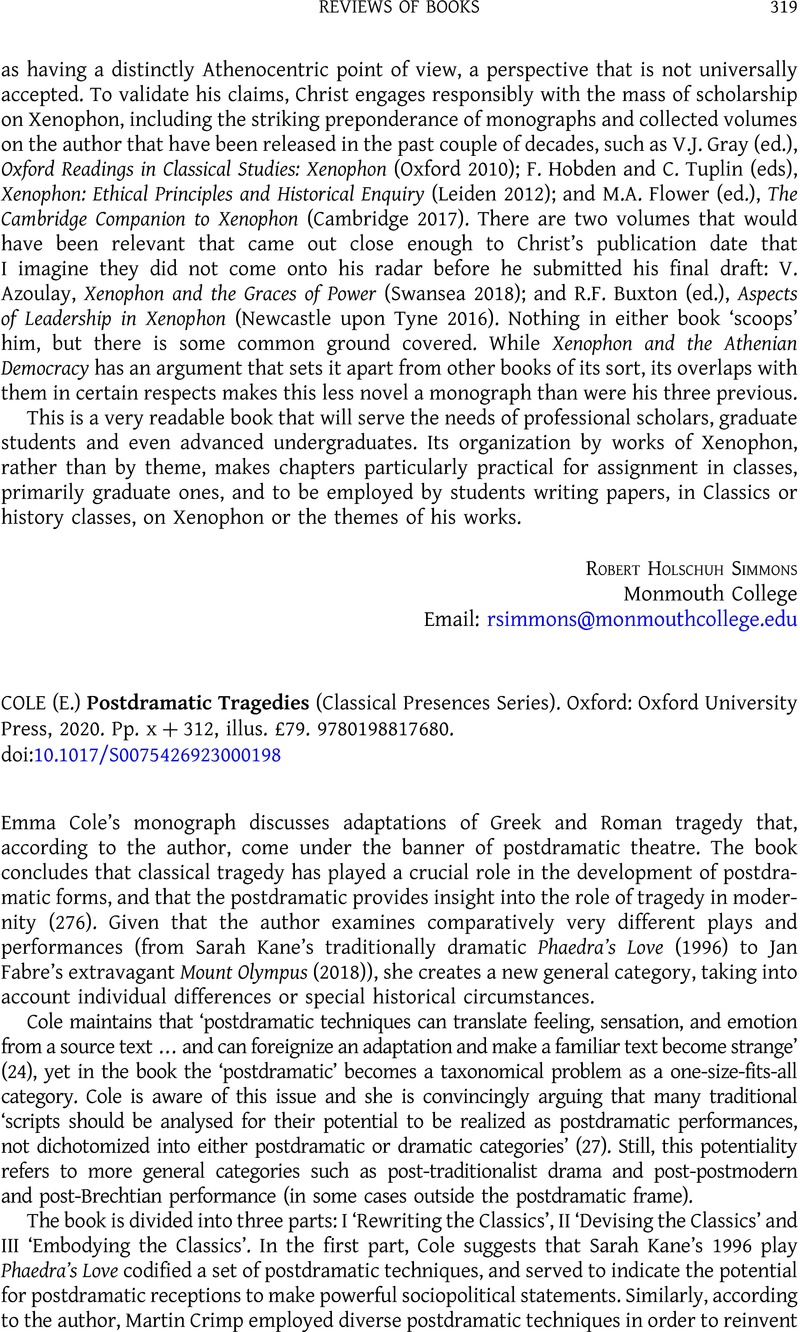No CrossRef data available.
Article contents
(E.) COLE Postdramatic Tragedies (Classical Presences Series). Oxford: Oxford University Press, 2020. Pp. x + 312, illus. £79. 9780198817680.
Review products
(E.) COLE Postdramatic Tragedies (Classical Presences Series). Oxford: Oxford University Press, 2020. Pp. x + 312, illus. £79. 9780198817680.
Part of:
Reception and history of scholarship
Published online by Cambridge University Press: 03 May 2023
Abstract
An abstract is not available for this content so a preview has been provided. Please use the Get access link above for information on how to access this content.

- Type
- Reviews of Books
- Information
- Copyright
- © The Author(s), 2023. Published by Cambridge University Press on behalf of the Society for the Promotion of Hellenic Studies


